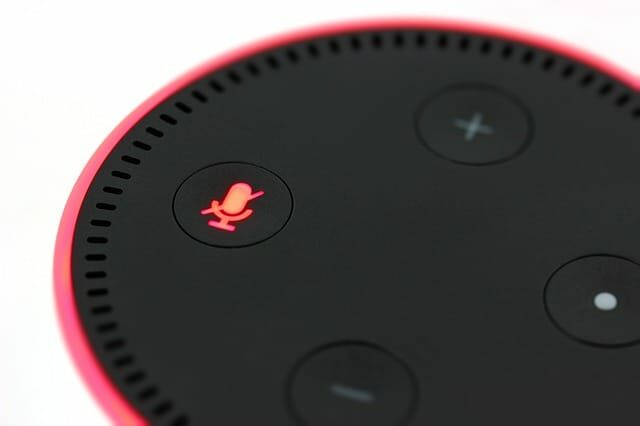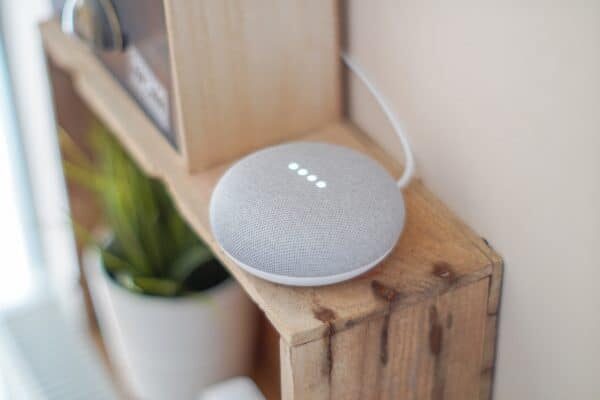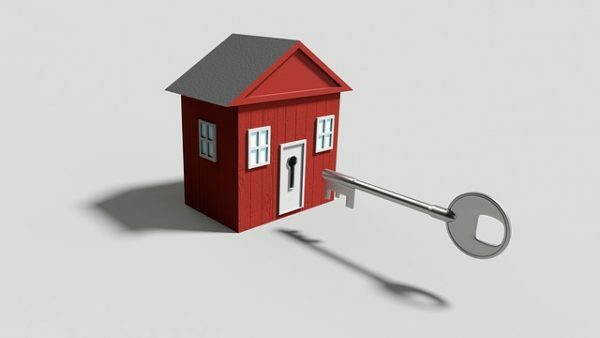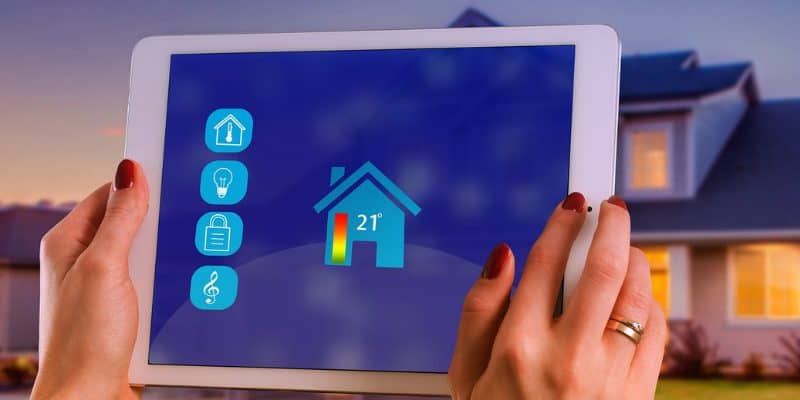As an Amazon affiliate, I earn from qualifying purchases.
Synopsis: This post explores key things to consider in order to create the ultimate smart home ecosystem. It answers questions like: Should I get an Alexa, Google Home, Apple HomeKit, or something else? How do I set up all my devices to work together? Is my smart home eavesdropping on me?
Thanks to Jennifer Karami of Redfin.com for contributing to this post.
Tony Stark Would Be Proud
The smart home used to be the stuff of science fiction. Moviegoers watched as Tony Stark controlled his mansion with nothing more than his voice, or wished they could have the type of technology that made Batman’s life so amazing. These days, you don’t have to be a billionaire business owner or an eccentric crime fighter to create the ultimate smart home – tools like Amazon Alexa, Google Assistant, and the Apple Home Kit have put home automation within reach of nearly anyone.
Tony Stark Is Iron Man [Photo Credit: Flickr.com]
Home automation is not only cool, it’s practical, sustainable, and can even save you money by reducing your utility bill.
Smart hubs can also communicate with other internet devices, allowing you to control all your smart home gadgets simultaneously. They can turn down the thermostat, turn on the lights, scare away burglars, and even make you coffee.
Home automation is not only cool, it’s practical, sustainable, and can even save you money by reducing your utility bill. When looking to automate your home, it’s important to consider the different types of smart home ecosystems, devices, and how they will work together to create a seamless experience.
What Are the Best Smart Home Ecosystems?
Home automation systems typically have three components: the virtual assistant (the AI that converses with you), the speaker (hardware), and the phone app (where you control your devices). Each system has its own instructions for pairing devices, as well as the ability to set up an automation “flow” that performs a series of actions. It’s important to note that not all smart hubs support all smart devices, and vice versa. To find compatible products, look in the product description for “Works with…” and make sure it works with your virtual assistant of choice.
Keep in mind all home automation products use bandwidth, so no matter which type of home automation system you choose, it is important to assess your current connectivity and network speed. Before starting, you will need to make sure the tablet or smartphone you are using is connected to the same WiFi network as your home automation hub, and that the device you are adding is powered on.
Amazon Alexa Ecosystem
Virtual Assistant: Alexa
Speaker: Amazon Echo
App: Amazon Alexa for iOS, Android, and Google Play

Amazon Echo Dot [Photo Credit: Pixabay.com]
To ensure a device works with Alexa, be sure to look for “Works with Alexa” in the product description of the gadget you intend to buy. Once the two devices are connected to WiFi, simply tap ‘Add Device’ from the Alexa app and it will pair them together. You can also use your voice to ask Alexa to discover new devices.
Alexa’s Routines feature makes it easy to automate a flow of actions across devices so they work together. For instance, you can create a group called “Upstairs lights” that will turn all the lights on and off simultaneously.
Share this Post
Google Assistant Ecosystem
Virtual Assistant: Google Assistant
Speaker: Google Home
App: Google Assistant for iOS, Android, and Google Play
Google Assistant is built into Android phones, making it a seamless experience for Android users. Assistant can play music, get weather updates, take calls, and control your other devices through the Google Home app. It can also answer almost any question because the technology is powered by the sophisticated algorithms behind Google search.

Google Home Mini [Photo Credit: Pexels.com]
Apple HomeKit Ecosystem
Virtual Assistant: Siri
Speaker: HomePod
App: Home for iOS
HomeKit is powered by Siri, the familiar iPhone assistant. HomeKit has less compatible gadgets available than its competitors, partly because Apple’s encryption has made it closed to developers until recently. The extra encryption is a bonus for those concerned with privacy, but users report that it can be a headache to set up.
HomeKit has a Rooms feature that allows you to group devices by room, while the Automation feature allows you to create a flow of commands – for instance, turning on the lights and playing the music at the same time.
To sync devices with Apple HomeKit, open the app and click the plus sign to add a new accessory. You’ll need to scan the device’s QR code or enter it manually. Because of Apple’s encryption, it’s especially important to make sure the device you choose is HomeKit compatible.
Smart home devices/accessories/gadgets are designed to work with a smartphone app and pair with your home ecosystem of choice. There are plenty of smart home accessories on the market today to suit a variety of household functions, including entertainment, cooking, pets, security, energy conservation, and more.
Best Smart Home Devices for Entertainment
Since most modern TVs, stereos, and entertainment devices are already WiFi-enabled, your living room is a natural place to start building your smart home ecosystem. There are plenty of smart home devices to tie your home entertainment experience together, like the Sonos Soundbar, a smartphone-controlled speaker that sits right under your TV. Pair it with subwoofers for a truly immersive home theatre system.
Speaking of home theatres, Samsung offers surround sound systems that are wifi-enabled. Roku players are streaming devices you connect to a TV with HDMI, enabling you to stream content from Hulu, Netflix, HBO, etc. Imagine walking into your living room and saying, “Alexa, play Game of Thrones,” and having your TV and surround sound turn on instantly to start streaming. Family movie nights just got better.
Best Smart Home Devices for Cooking
Smart home kitchen technology is a huge market, and for good reason. Imagine waking up to a pot of freshly brewed coffee every weekday, ready before you’re even out of bed. This dream can be reality with a smart coffee maker by WeMo. Just auto-program it to brew at the same time every morning and enjoy snoozing an extra 15 minutes.
Sure, Alexa can make you a grocery list on command, but there’s nothing worse than being at the store and not being able to remember if you’re out of eggs or milk. Enter the Smarter FridgeCam – a camera that lets you see the contents of your fridge from anywhere via an app on your smartphone. Smart technology at its finest.
Love cooking, but hate taking out all your measuring tools? The Drop Scale measures ingredients for you to make the following recipes a breeze. If you’re more of a one-and-done person when it comes to meals, consider the smart crock pot that cooks your meal while you’re out at work. This device lets you change the settings on your crock pot from anywhere via a smartphone app.
Best Smart Home Devices for Pets
Smart technology isn’t just for humans. Self-cleaning litter boxes like Litter-Robot separate the waste from the litter and monitor your cat’s litter box usage through an app. Set automatic feeding schedules for your dog or cat with the Smart Feed, which you control through your phone (no Alexa integration yet).
Let your dog come and go with ease (and keep the cat in) with the Petsafe smart door, a doggy door that opens via a small “key” you attach to your dog’s collar. Smart collars like the LINK AKC are GPS-enabled to track your dogs location from an app, giving you the ultimate peace of mind.
Best Smart Home Devices for Security
Protect your home, inside and out, with smart home security gadgets. Systems like Simpli Safe come equipped with motion sensors and alarms to scare off intruders. When the security system is triggered, it alerts you via a phone app and begins recording, catching criminals on camera. Burglars beware!
Speaking of cameras, the Logitech Circle camera helps you keep an eye on your front porch and make sure packages don’t get stolen. It can also be used indoors to make sure your small children, pets, etc. stay safe.
Forgot the keys? It’s no problem with a smart lock like the August, which lets you lock and unlock the door remotely, gain keyless entry, grant guest access, and more.
Best Smart Home Devices for Saving Energy
Smart home technology makes it easier to be green at home. From light bulbs to thermostats, these energy-saving smart home devices keep you comfortable while saving money on your electric bill.
No more unplugging your appliances when you leave for the day – smart outlets turn on and off automatically, saving electricity when not in use.
A smart thermostat (like the Nest) programs itself based on your schedule and adjusts the temperature accordingly. Downstairs always cold? It can heat and cool individual areas depending on where you spend your time. Smart thermostats are environmentally friendly and pay for themselves relatively quickly.
Turning off the lights when you leave a room is an easy way to conserve energy, but it’s hard to remember in practice. Enter the smart light switch, which controls the lights automatically. Similarly, smart bulbs like the Philips Hue light bulb make it easy to turn on all the lights at the same time, and can even change colors on command.
Automate your existing shades and blinds with the SOMA Smart Shades. This device is controlled through an app, where you slide your finger to the desired amount of coverage. Or, just use your voice to tell Siri to “close the blinds.” Voila!
Basement prone to flooding? A smart water sensor like the GROHE detects water leaks early, preventing flooding and costly structural damage to your home.
Smart Home Security and Privacy

Smart Home Ecosystem Security [Photo Credit: Pixabay.com]
Like any device that relies on internet access, smart home gadgets are susceptible to attacks, including password stealing, cryptocurrency mining, and other nefarious activities. Fortunately, you can take precautions to greatly reduce the risk and keep your devices secure:
There are all sorts of gadgets, accessories, and assistants on the market today. Devices that were once clunky and unintuitive can now operate seamlessly through a smartphone app. From coffee makers to light bulbs, it makes you wonder – what will they automate next?
If you’re looking to upgrade your home’s IQ, start by choosing one or more smart devices, a smart hub, and then sync them together to create the ultimate smart home ecosystem. You’ll be talking to your house and impressing your guests in no time. The future is here.
Infographic: Smart Homes Take the World
Thanks to our friend Ana Beara from Safeatlast.com for contributing this beautiful and helpful infographic to our post.

Amazon vs Google vs Apple – What’s Your Fav?
Do you have a smart home? What is your favorite smart home device? Please leave us a comment below.
📚 Related: Airpods vs Earpods: Which Apple Earbuds Are Right For You?

Tim Brennan, a tech blogger and host of the @TecTimmy YouTube channel, writes about smart homes at oneSmartcrib, home theaters at UniversalRemoteReviews, and AI in writing at Writeinteractive. He holds a Journalism degree from Northeastern University and has covered technology for three decades. He lives on the ocean in Nahant, Massachusetts.
Please subscribe to my YouTube channel for a fun take on all things tech.

